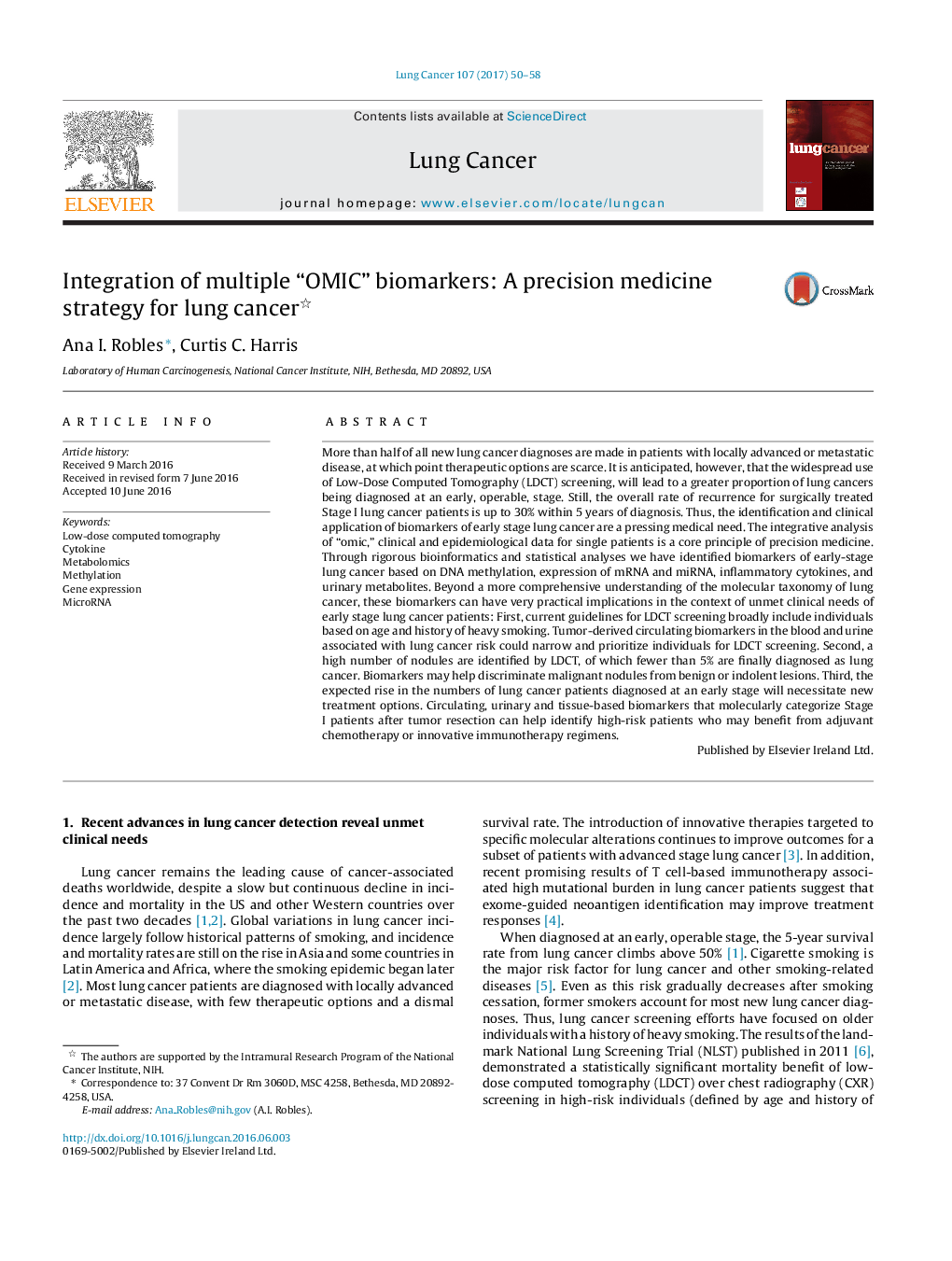| کد مقاله | کد نشریه | سال انتشار | مقاله انگلیسی | نسخه تمام متن |
|---|---|---|---|---|
| 5528104 | 1547960 | 2017 | 9 صفحه PDF | دانلود رایگان |

- Biomarkers are needed to prioritize high-risk individuals for lung cancer screening.
- Biomarkers derive from integrative analysis of molecular data for single patients.
- Validated biomarker combinations may aid patient diagnosis and risk stratification.
More than half of all new lung cancer diagnoses are made in patients with locally advanced or metastatic disease, at which point therapeutic options are scarce. It is anticipated, however, that the widespread use of Low-Dose Computed Tomography (LDCT) screening, will lead to a greater proportion of lung cancers being diagnosed at an early, operable, stage. Still, the overall rate of recurrence for surgically treated Stage I lung cancer patients is up to 30% within 5 years of diagnosis. Thus, the identification and clinical application of biomarkers of early stage lung cancer are a pressing medical need. The integrative analysis of “omic,” clinical and epidemiological data for single patients is a core principle of precision medicine. Through rigorous bioinformatics and statistical analyses we have identified biomarkers of early-stage lung cancer based on DNA methylation, expression of mRNA and miRNA, inflammatory cytokines, and urinary metabolites. Beyond a more comprehensive understanding of the molecular taxonomy of lung cancer, these biomarkers can have very practical implications in the context of unmet clinical needs of early stage lung cancer patients: First, current guidelines for LDCT screening broadly include individuals based on age and history of heavy smoking. Tumor-derived circulating biomarkers in the blood and urine associated with lung cancer risk could narrow and prioritize individuals for LDCT screening. Second, a high number of nodules are identified by LDCT, of which fewer than 5% are finally diagnosed as lung cancer. Biomarkers may help discriminate malignant nodules from benign or indolent lesions. Third, the expected rise in the numbers of lung cancer patients diagnosed at an early stage will necessitate new treatment options. Circulating, urinary and tissue-based biomarkers that molecularly categorize Stage I patients after tumor resection can help identify high-risk patients who may benefit from adjuvant chemotherapy or innovative immunotherapy regimens.
Journal: Lung Cancer - Volume 107, May 2017, Pages 50-58